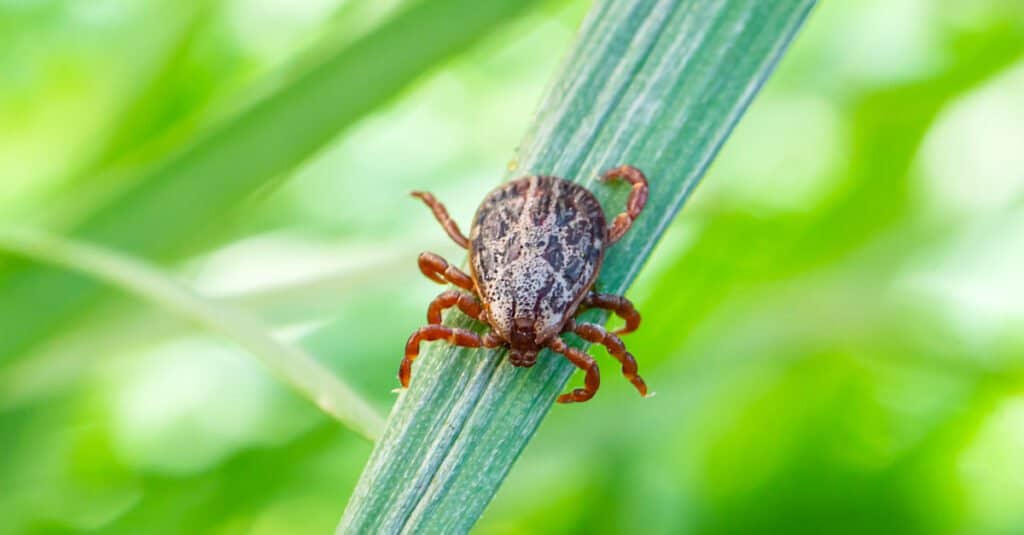How does a blood-sucking creature, one that’s unable to jump or fly, manage to reach its much larger host? Unlike mosquitoes that can fly, and fleas that can jump up to eight inches, ticks can only crawl. However, new evidence has shown that ticks may use static electricity to fly through the air.
How does it work? Animals walking through tall grasses generate a level of static electricity. Researchers used that amount of static in the laboratory to propel a species of tick, called the castor bean tick, to fly across the air.
The passive electrostatic attraction allowed the ticks to leap through the air at a distance three to four times their body length. That may seem like a tiny distance to us. But it’s the equivalent of a six-foot man leaping up three flights of stairs in a single bound.
Scientists plan to conduct field studies to confirm their findings. The researchers also theorized that ticks may even sense changes in the electric field, such as when an animal is passing by with its fur rubbing against the grass. However, more research needs to be done in this area.
Furthermore, it’s also possible that other parasites, such as fleas, lice, or mites may also use static electricity to fly through the air.
The findings could result in new and effective strategies to repel ticks and other similar parasites, such as anti-static clothing, or anti-static spray.
The study was published in the Journal of Current Biology.
What Diseases Do Ticks Carry?

Wooded areas can be full of ticks, but ticks can be found in backyards and gardens as well.
©iStock.com/Diy13
More than just a nuisance, ticks can transmit serious diseases to humans, pets, and livestock. Tickborne diseases include:
- Lyme Disease
- Powassan Virus
- Tickborne Relapsing Fever (TBRF)
- Colorado Tick Fever
- Anaplasmosis
- Babesiosis
- Tularemia
- Rocky Mountain Spotted Fever
Lyme disease is the most commonly reported tickborne disease in the United States. Symptoms include fatigue, fever, and a headache. If untreated, it can spread the the joints, heart, and nervous system.
About the Castor Bean Tick

The castor bean tick can transmit the tickborne viral disease, louping ill, to sheep, which can be deadly for the sheep.
©iStock.com/idal
The castor bean tick (Ixodes ricinus), also known as the deer tick or sheep tick, is commonly found in Europe. It’s a hard tick that requires a humidity of 80%, and subsequently can be found in regions with high rainfall and lush vegetation. Castor bean ticks are known to transmit Lyme disease and the tick-borne encephalitis virus.
This tick can also transmit the louping ill, (or leaping ill,) to sheep. The virus can cause fatigue, weakness, muscle tremors, and even death.
Thank you for reading! Have some feedback for us? Contact the AZ Animals editorial team.








